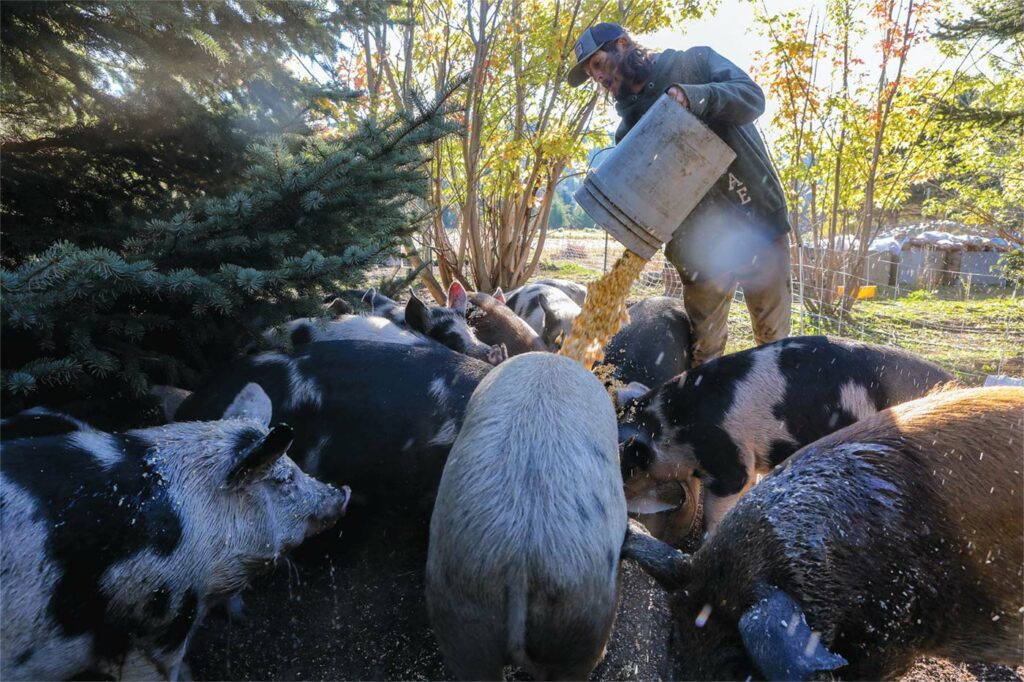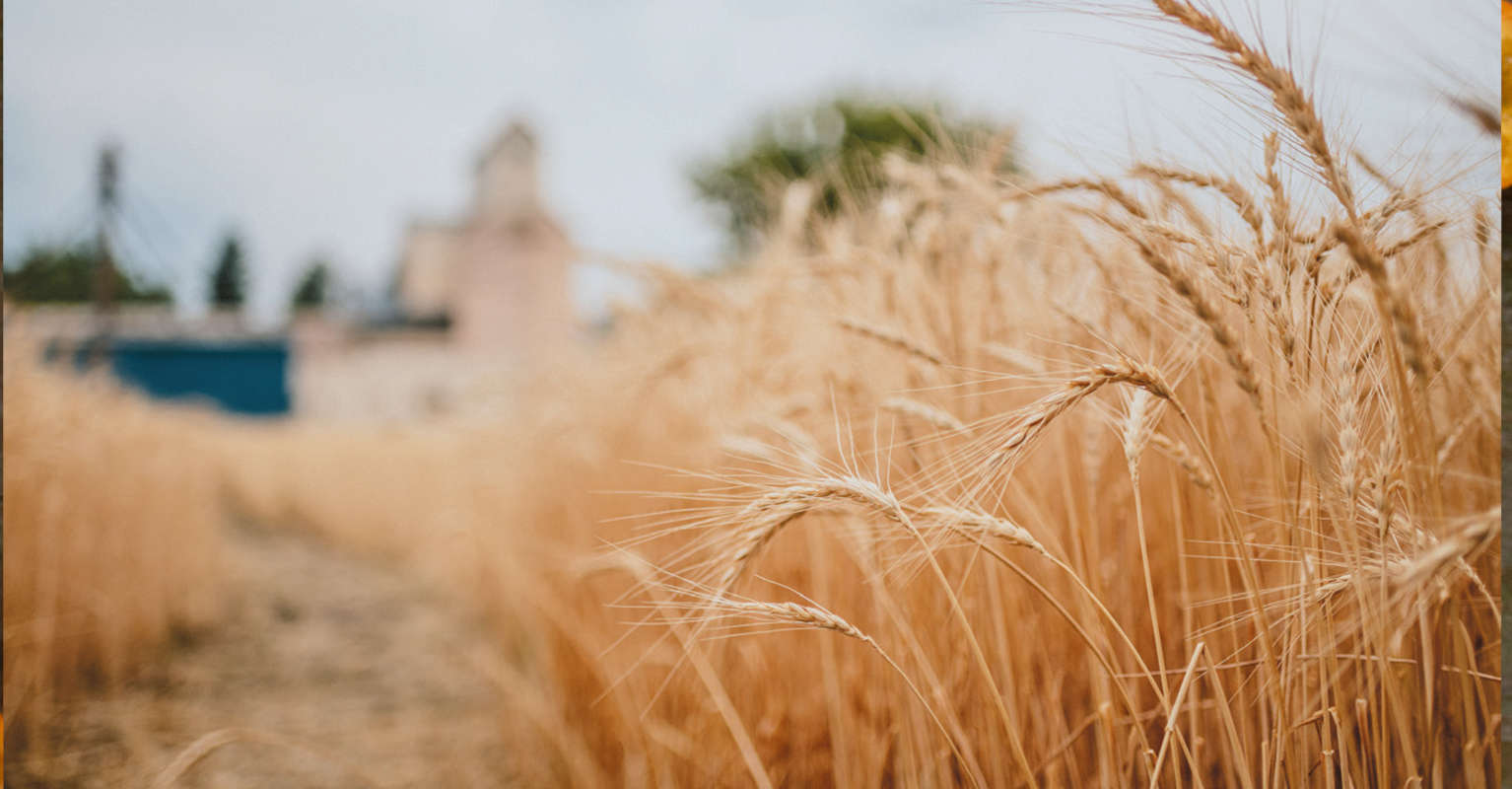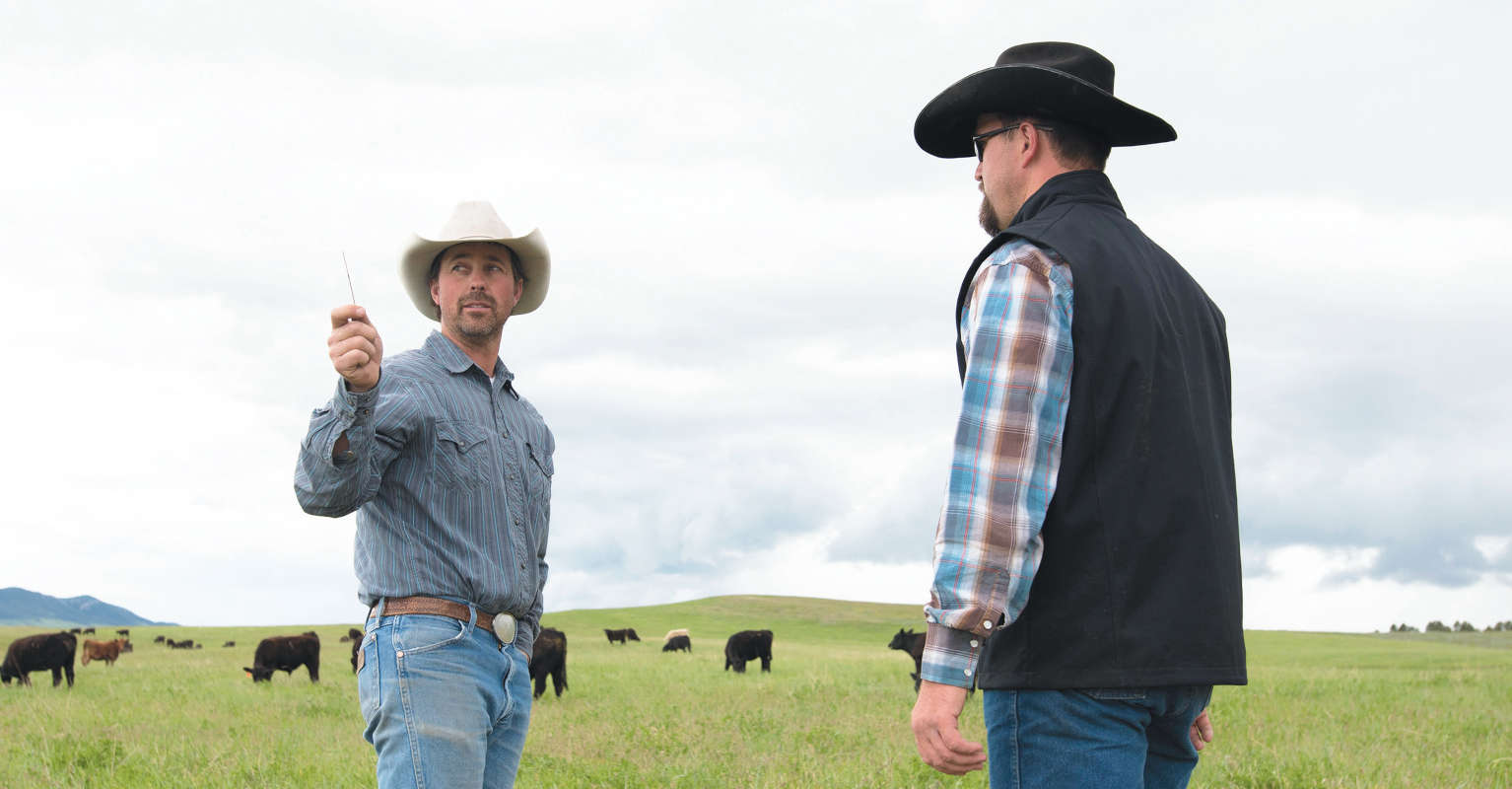Alex Fox of Gallatin Valley Botanical is one of many young farm workers who are getting creative in the face of an increasing cost of living. Fox manages his expenses by living in an off-grid cabin on the farm.
Will Our Community Outgrow Our Farms?
It’s a balmy October Sunday and farmers across the Gallatin Valley are busy harvesting their final veggies, prepping greenhouses, and storing produce to sell through the winter. At Amaltheia Organic Dairy’s vegetable farm, I plod along the muddy road past a sleeping border collie, golden cottonwood trees, and empty greenhouses until I hear a chorus of snipping and kerplunking coming from one greenhouse at the end of the way. About eight farmworkers and volunteers trim dried roots and tops from cured garlic bulbs and toss them into black crates organized by clove size: bulbs with large cloves will be planted before the snow falls and the small ones will be sold through the winter.
It is a Volunteer Sunday, when Amaltheia welcomes community members to come work for an afternoon in exchange for a box of produce and cheese. Nate Brown, who runs the vegetable operation, started the volunteer day in 2019 to get ahead of labor-intensive tasks that keep the farm running. “It was getting toward the end of October [in 2019] and it was going to get really cold, and we were going to lose all of our radishes and turnips,” Brown says. “We got on social media about two days before [the cold weather] and a bunch of people came out to help.”
Since then, the program has become integral to the farm’s operations as Bozeman experiences a labor shortage for lowwage jobs like farming. Even so, Brown struggles to keep his crew staffed.
“It’s hard to compete with wages and housing prices in Bozeman and then try to make a farm run on prices from two or three years ago,” Brown says. “We’ve tried to raise our prices on our produce and cheese but finding that balance has been difficult.”
Across the valley, Daniel Moore from Terra Greens Produce in Manhattan expresses similar struggles. “This is the first year I’ve had this problem. The whole agricultural market is going through the same thing, the whole state.” Moore hired twice as many workers as last season, but because most were parttime, he still struggled to reach the labor hours he needed to run his farm.
DIRTY HANDS AND MUDDY BOOTS
Every spring, able farmhands gather at the valley’s farms undeterred by the long days, inclement weather, and the battle against weeds in the absence of agrochemicals. “There’s a pretty big interest in the Bozeman community, especially at the younger level, of people who are interested in agriculture and food,” says Dan Spiwak, who leads Amaltheia’s vegetable crew and helps coordinate the volunteer program. “They’re working on farms, in restaurants, and they have friends at the market. It keeps it pretty lively.”
This sense of community, a love for food, and an interest in learning about small-scale agriculture has drawn many students, seasonal workers, and travelers to local farms for years. Many have never worked in agriculture before, but some see this as an alternative to other farming practices they’ve been involved with in the past.
“I like this style of farming because I’m not growing 100 cows on 200 acres; I’m growing thousands of pounds of vegetables that are more energy and water efficient,” says Alex Fox, the harvest manager at Gallatin Valley Botanical at Rocky Creek Farm (GVB). “This, mixed with a lot of different styles of farming, is the future.” Fox grew up working on his family’s farm in Warden, Montana, where they produced sugar beets, barley, and beef. “I love this work. I’ve never loved doing something more than farming. It grows these connections with the people around you, the earth, the microbiome in the soil. Yeah, you have to work hard, but you’re having a blast, you’re doing something beneficial for the community, and for the environment.”
However, as the cost of living rises, fewer young farmers are able to make ends meet. Fox fills the gap by living in an off-grid cabin at GVB, but his co-worker, Carly Brief, rents in town and has to put in fifty to sixty hours a week managing the pack shed to do so. She also started running the Bozeman Winter Farmers’ Market each week to supplement her income. “It’s definitely a lot of work, but I farm because I love the outdoors, I love plant sciences, I love the people that the farm community attracts, and the lifestyle,” Brief says.
“I’ve never loved doing something more than farming. It grows these connections with the people around you, the earth, the microbiome in the soil.” —Alex Fox, harvest manager at Gallatin Valley Botanical
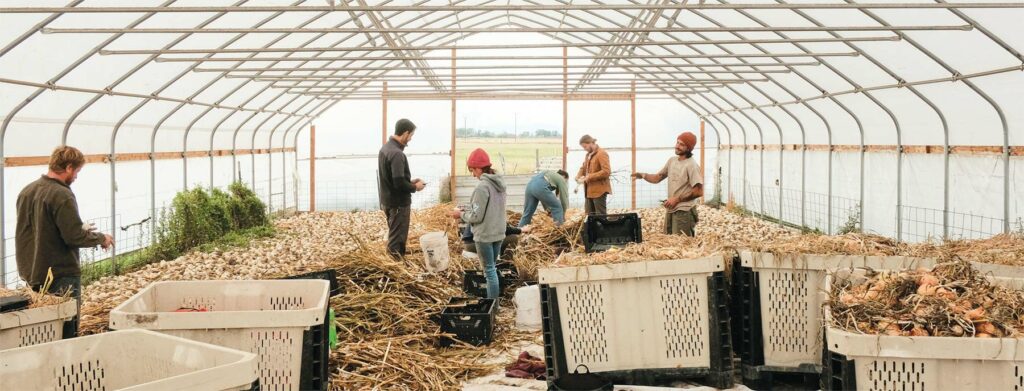
A GROWING DEMAND
Our valley sometimes feels like a local food haven, with creeks meandering down from the mountains through fertile farmland, and numerous restaurants and grocery stores that serve up local veggies and meat. That’s part of what has attracted many to move here—especially during the pandemic, when trust in a globalized food system wavered.
“It was shocking for people to go into grocery stores and see bare shelves,” Brown says. “I mean, it was scary for me and I’m a farmer who has an abundance of meat, cheese, and vegetables.”
As a result, our community turned to local farms. Community- supported agriculture (CSA) shares sold out across the valley and Amaltheia watched their vegetable sales grow by 30 percent. Volunteer numbers rose too, as people sought to get away from their houses and computers.
Mary Stein, who leads the Sustainable Foods and Bioenergy Systems Program at MSU, sees this shift in the community as an extraordinary opportunity to increase access to local food. “It was the first time that many of us contemplated that our globalized food system is not foolproof, and that makes us realize that we need different scales to be truly resilient,” she says. “We need a working local food system in conjunction with a working national and a working global food system. If one breaks down, then the others can fill in the gaps.”
Stein also points out that though Bozeman seems saturated with local food, in the 1940s and ’50s, about 70 percent of the food that people in Bozeman ate came from Montana. Today, it’s closer to 7 or 9 percent, and much of that is available mainly to those with disposable income. This dramatically low consumption of local food has Stein concerned about our community’s resiliency—especially for those already experiencing food insecurity.
“There is nothing more basic than the ability to feed ourselves, so we all better care about it because it doesn’t just happen,” Stein says. “The viability of our local food system [depends on whether] we can move fast enough to build it back up in the face of this amazingly rapid pace of development. … We’ve got a really frightening affordable housing shortage in this community. The rents are going up, the properties are being bought off, and expensive housing is being built.”
The land and housing market also threatens area farms, as changes in ownership can jeopardize agricultural leases that have been in place for decades. Last year, 100 acres that Amaltheia had leased for 15 years went up for sale and Brown held his breath to see who would buy it. “If we lost that lease, then we wouldn’t have been able to graze our animals and at that point we would have had to sell the goat cheese business,” he says.
Fortunately, the land was bought by Dirt Capital Partners, a Vermont-based firm that invests in regenerative agriculture across the country and is partnering with Amaltheia to secure long-term land access. Brown and his employees were relieved. He also hopes to fix up a 1903 farmhouse on their leased land to secure a place for his employees to live in the future. “Employee housing is No. 1 on our radar,” Brown says.
In the 1940s and ’50s, about 70 percent of the food that people in Bozeman ate came from Montana. Today, it’s closer to 7 or 9 percent, and much of that is available mainly to those with disposable income.
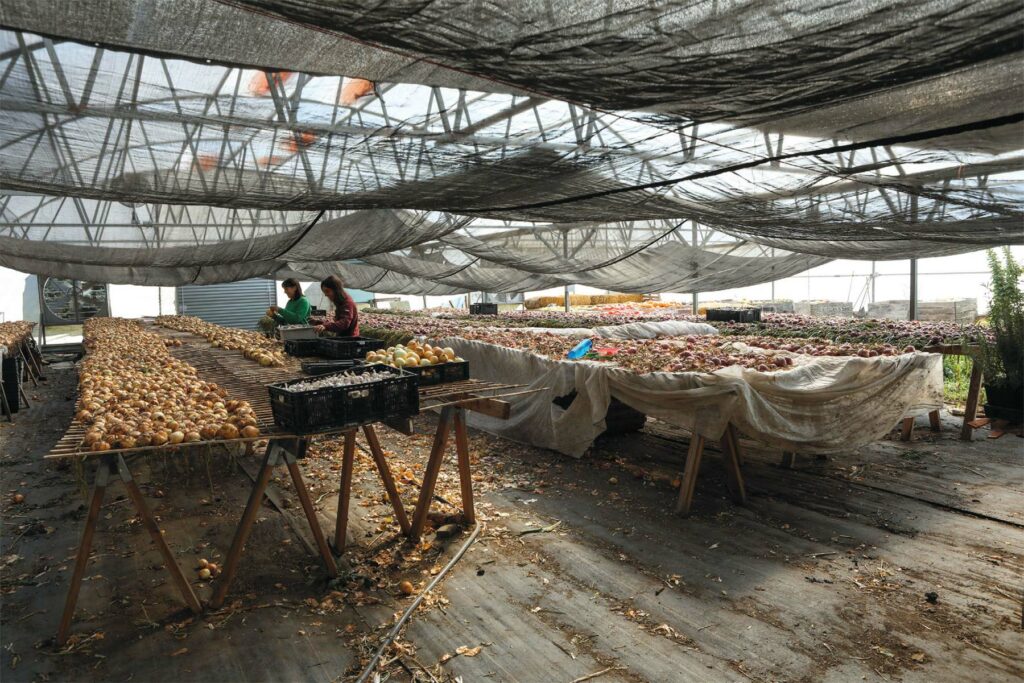
IN NEED OF A PLACE TO REST
Like Brown, many farmers would happily house their employees, but many are unable to because it would violate their land lease, or it would be too costly to build housing units.
Back in the GVB vegetable fi eld, I fi nd the harvest crew in a freshly lifted bed of fi ngerling potatoes, so I kneel down and chat with a few of them about housing while we search for the little golden tubers buried in the soil. Like Fox, most of the crew lives on the farm but there aren’t enough structures to house everyone so the rest have had to get creative, sleeping in campers, trucks, or large tents dispersed in a wooded area near the creek.
Almost the whole harvest crew shares the sentiment that living on the farm is what enables them to work there—only a few were lucky enough to fi nd aff ordable housing in town. For those who live and camp on the farm, there is one element that makes it all feasible: community.
“We cook for each other, we do activities that we’re interested in together, we provide emotional support for each other, and friendship,” Fox says back at his little cabin. “It’s like a family. It’s the best part of the farm. I’m so fortunate to have a permanent space here where I’m comfortable and am not out in the elements. Th e future of this farm will defi nitely have more employee housing.”
But according to Mary Stein, bridging the gap between aff ordable housing and the needs of our local food system depends on how we answer a more philosophical question: “How important is it for us to have our food grown in our community?” she asks. “If the answer is that it is important, then the consumer needs to be a part of the solution, the local government needs to be a part of the solution, and private businesses and investors need to be a part of the solution— we really need a team approach.”
